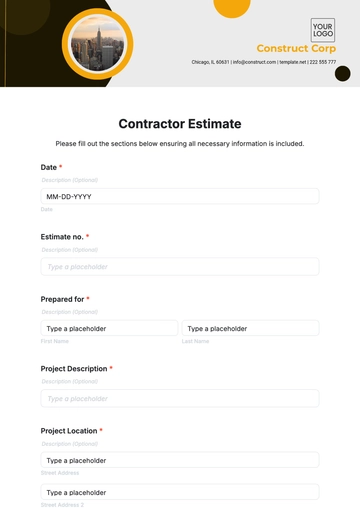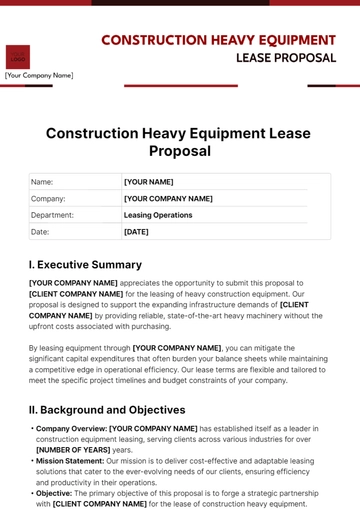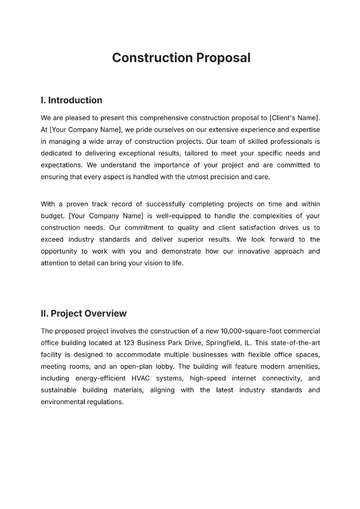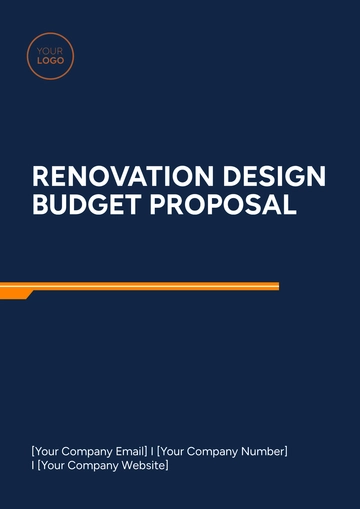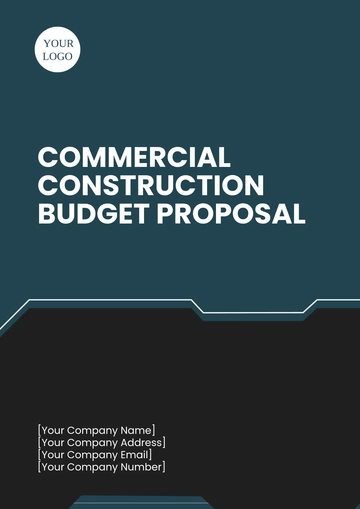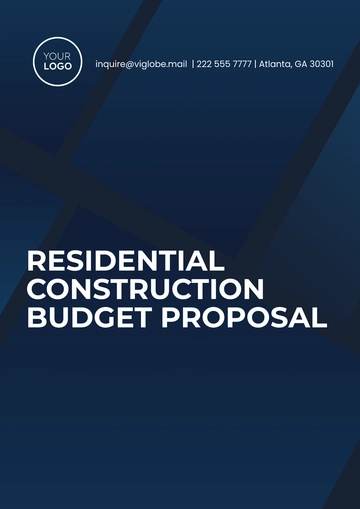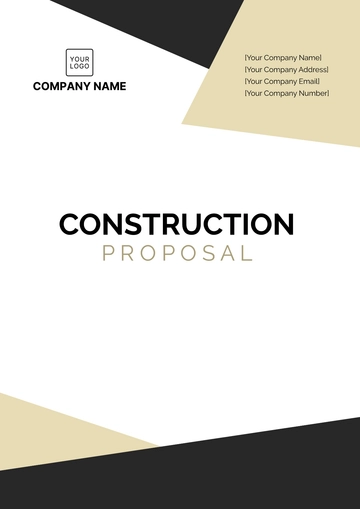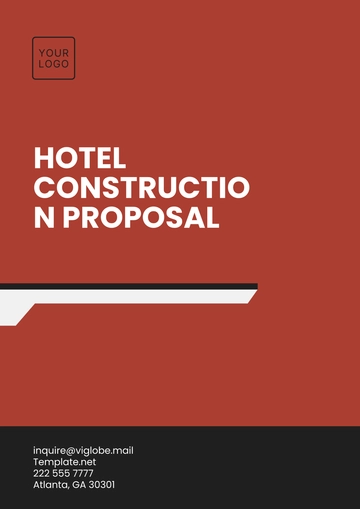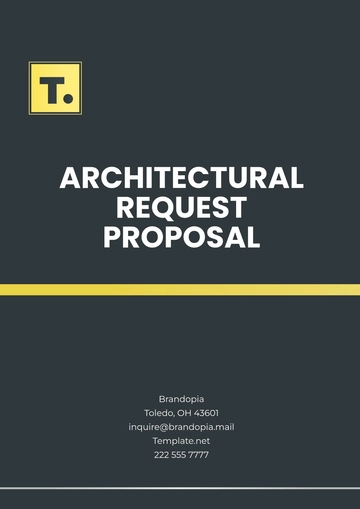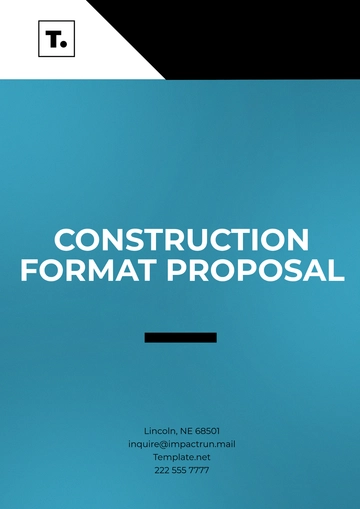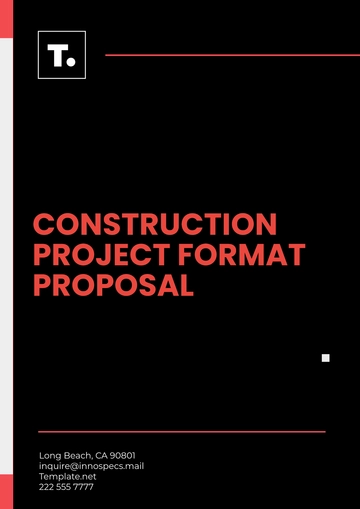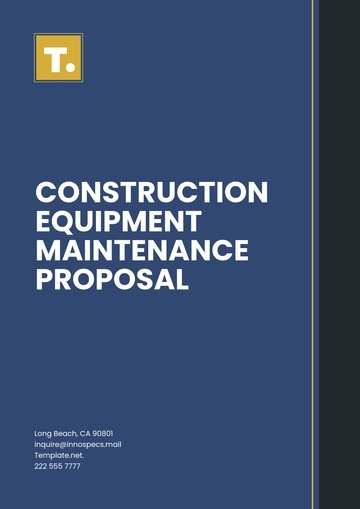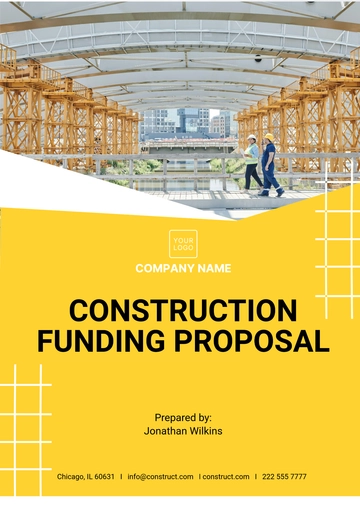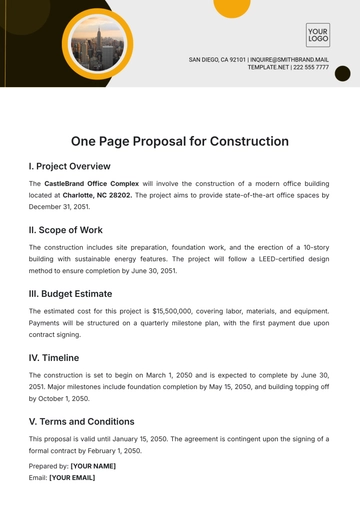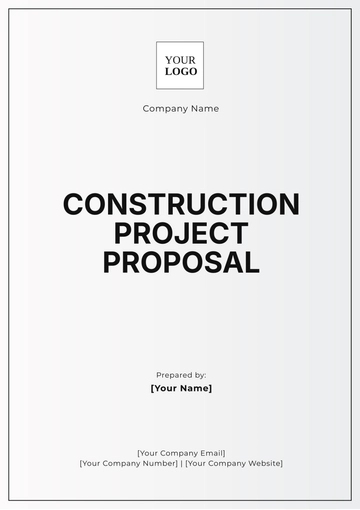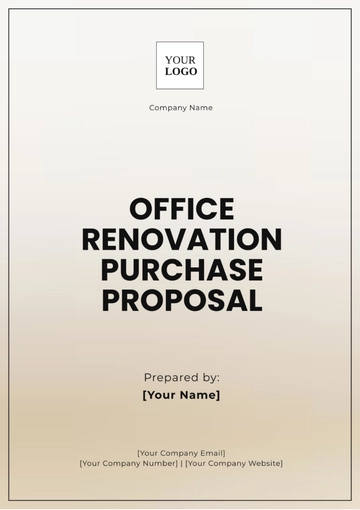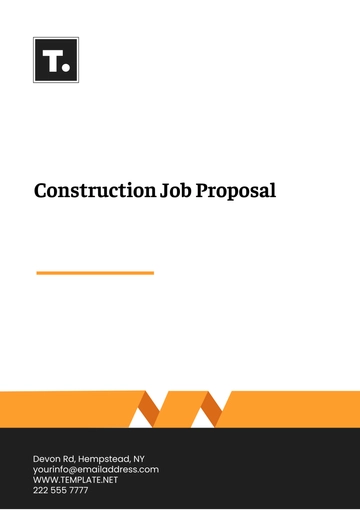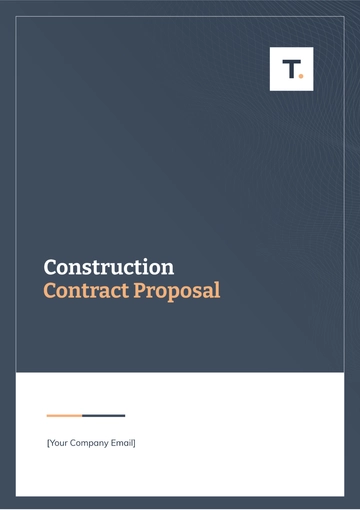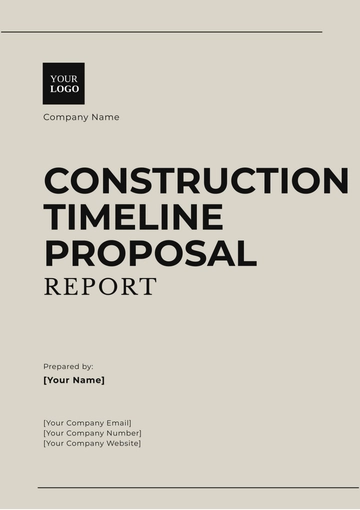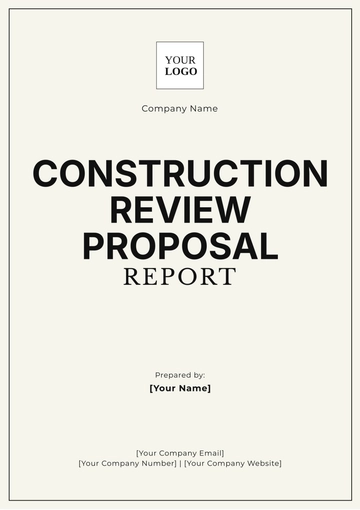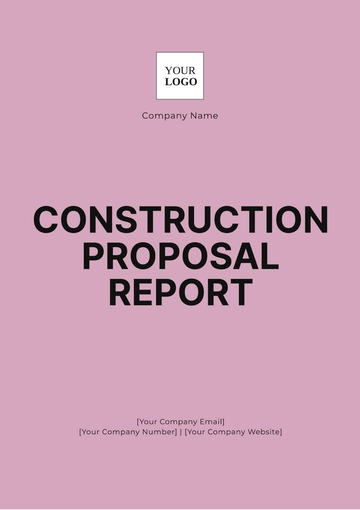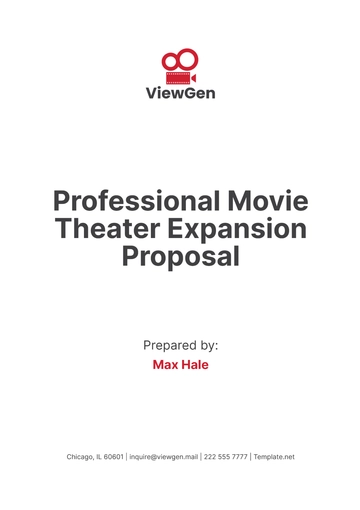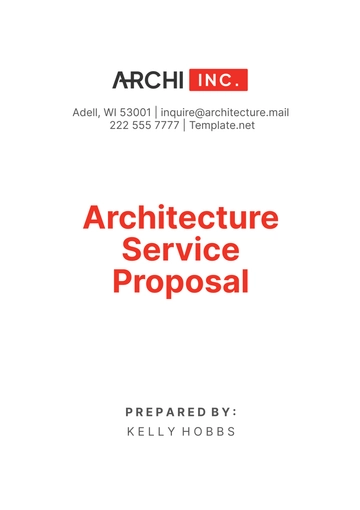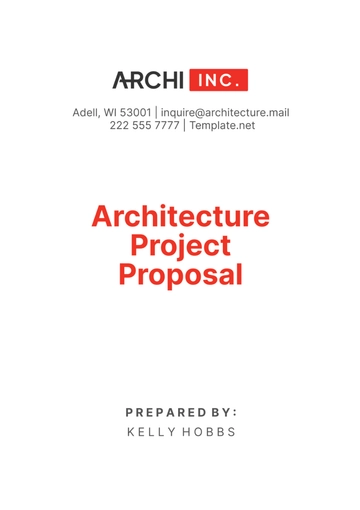Free Professional Movie Theater Expansion Proposal
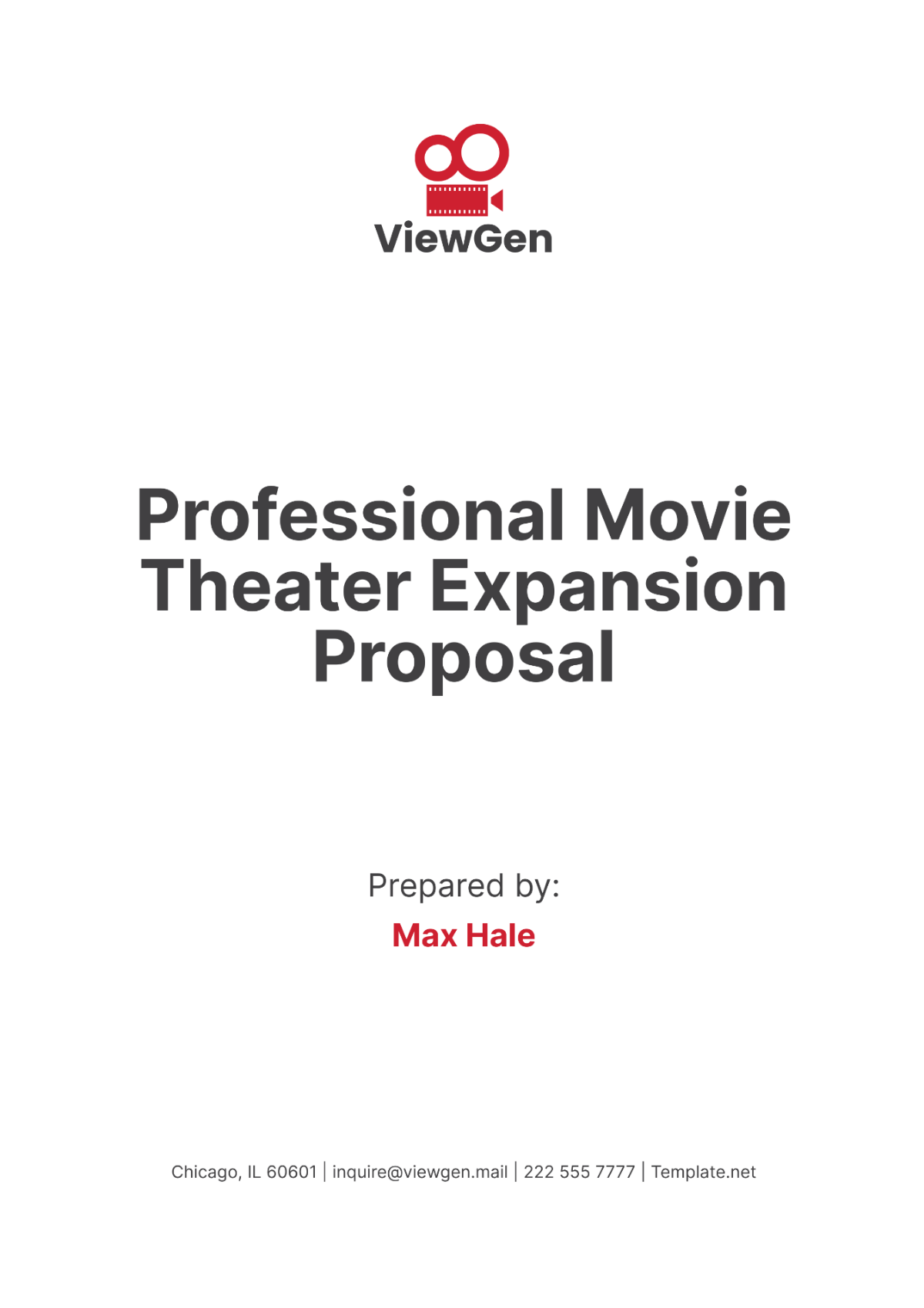
I. Executive Summary
This proposed expansion plan for [Your Company Name] outlines a strategic initiative to enhance our market presence, increase revenue, and provide an unparalleled movie-going experience. With a total budget of $5,000,000 and a timeline spanning 18 months, this expansion aims to establish new locations, upgrade facilities, and implement innovative marketing strategies. By focusing on these key areas, we aim to meet the growing demand for premium entertainment and achieve substantial growth.
This Professional Movie Theater Expansion Proposal details the comprehensive approach to expansion, covering market analysis, site selection, facility upgrades, marketing strategies, and financial projections. The plan also addresses potential risks and mitigation strategies to ensure the successful execution of the expansion. Our goal is to leverage our strengths and capitalize on market opportunities to solidify our position as a leader in the movie theater industry.
The expansion will be phased, with each phase carefully planned and monitored to ensure timely completion and optimal resource allocation. By adhering to this detailed proposal, [Your Company Name] is poised to deliver exceptional results and achieve its long-term vision of growth and excellence.
II. Market Analysis
A. Industry Overview
Growth Trends: The movie theater industry is experiencing steady growth, driven by technological advancements and increasing consumer demand for premium entertainment experiences. Industry revenue is projected to grow by 4% annually over the next five years.
Consumer Preferences: Consumers increasingly seek high-quality experiences, including advanced audiovisual technology, comfortable seating, and diverse concession offerings. Premium formats such as IMAX and 3D are gaining popularity.
Competitive Landscape: The market is highly competitive, with major chains dominating. However, there is significant potential for growth in underserved areas and niche markets that prioritize unique and enhanced viewing experiences.
B. Target Market
Demographics: Our target market includes individuals aged 15-45, with a focus on families, young adults, and movie enthusiasts. This demographic values premium experiences and is willing to pay a premium for enhanced services.
Geographic Focus: The expansion will focus on urban and suburban areas with high population densities and strong economic indicators. These areas have demonstrated demand for premium movie-going experiences.
Customer Preferences: Customers in our target market prioritize convenience, comfort, and quality. They seek theaters with advanced technology, diverse food and beverage options, and a superior overall experience.
C. SWOT Analysis
Strengths: [Your Company Name] has a strong brand presence, a loyal customer base, and a reputation for delivering high-quality experiences. Our existing locations are profitable and well-regarded in their communities.
Weaknesses: Potential challenges include high operational costs and the need for significant capital investment for expansion. Additionally, there is a risk of market saturation in certain areas.
Opportunities: There are opportunities to expand into underserved markets, introduce new technologies, and enhance our loyalty programs. Strategic partnerships and sponsorships can also provide additional revenue streams.
Threats: Potential threats include economic downturns, changes in consumer preferences, and increased competition from other entertainment options. Mitigating these threats requires continuous innovation and strategic planning.
III. Strategic Objectives
A. Revenue Growth
Increase Ticket Sales: Enhance the movie-going experience to attract more customers and increase ticket sales. Implement advanced technology, comfortable seating, and diverse movie offerings.
Boost Concession Sales: Upgrade concession offerings to include a wider variety of food and beverage options. Introduce premium items and unique menu choices to drive sales.
Expand Revenue Streams: Diversify revenue streams through advertising, sponsorships, and special events. Leverage our brand and facilities to create additional income opportunities.
B. Market Expansion
New Locations: Establish new theaters in strategic locations to capture market share. Focus on areas with high demand and limited competition.
Upgrade Existing Locations: Invest in upgrading existing theaters to enhance the customer experience. Implement new technology, improve seating, and expand concession options.
Increase Brand Awareness: Implement comprehensive marketing campaigns to increase brand awareness and attract new customers. Utilize digital and traditional media to reach a wider audience.
C. Customer Satisfaction
Enhance Customer Experience: Continuously improve the movie-going experience through innovation and customer feedback. Focus on delivering superior service and unique experiences.
Loyalty Programs: Strengthen our loyalty programs to reward repeat customers and encourage brand loyalty. Offer exclusive benefits and promotions to members.
Community Engagement: Engage with the local community through sponsorships, events, and partnerships. Build strong relationships with local organizations and residents.
D. Operational Efficiency
Streamline Operations: Implement efficient operational practices to reduce costs and improve service delivery. Utilize technology to automate processes and enhance productivity.
Staff Training: Provide comprehensive training programs for staff to ensure high service standards. Focus on customer service, technology, and operational procedures.
Performance Monitoring: Regularly monitor performance metrics to identify areas for improvement. Use data-driven insights to make informed decisions and optimize operations.
IV. Expansion Plan
The following table outlines the detailed plan for expanding [Your Company Name]:
Phase | Description | Timeline | Budget |
|---|---|---|---|
Phase 1 | Site Selection and Acquisition | Jan-Mar 2053 | $1,000,000 |
Phase 2 | Design and Planning | Apr-Jun 2053 | $500,000 |
Phase 3 | Construction | Jul-Dec 2053 | $2,000,000 |
Phase 4 | Technology and Equipment Installation | Jan-Feb 2054 | $750,000 |
Phase 5 | Recruitment and Training | Mar-Apr 2054 | $250,000 |
Phase 6 | Marketing and Promotion | May-Jun 2054 | $300,000 |
Phase 7 | Soft Opening and Testing | Jul 2054 | $100,000 |
Phase 8 | Grand Opening | Aug 2054 | $100,000 |
Total | $5,000,000 |
A. Site Selection
Market Research: Conduct thorough market research to identify potential locations. Consider factors such as population density, economic indicators, and competition.
Location Scouting: Visit shortlisted sites to assess suitability. Evaluate accessibility, visibility, and proximity to key amenities.
Negotiations: Negotiate lease or purchase agreements for selected sites. Ensure favorable terms and conditions to maximize profitability.
B. Design and Planning
Architectural Design: Work with architects to create functional and aesthetically pleasing designs. Focus on creating a comfortable and immersive movie-going experience.
Regulatory Approvals: Obtain necessary permits and approvals from local authorities. Ensure compliance with zoning laws, safety regulations, and environmental standards.
Project Planning: Develop detailed project plans, including timelines, budgets, and resource allocation. Use project management tools to monitor progress and address potential issues.
C. Construction
Contractor Selection: Select reputable contractors with experience in theater construction. Negotiate contracts to ensure quality work and timely completion.
Construction Management: Oversee construction activities to ensure adherence to plans and schedules. Conduct regular inspections and address any issues promptly.
Quality Assurance: Implement quality assurance measures to ensure high standards of construction. Focus on durability, safety, and aesthetics.
D. Technology and Equipment Installation
Technology Procurement: Procure advanced technology and equipment to enhance the movie-going experience. This includes projection and sound systems, seating, and concession equipment.
Installation and Testing: Install technology and equipment according to specifications. Conduct thorough testing to ensure optimal performance.
Maintenance Plans: Develop maintenance plans to ensure long-term reliability of technology and equipment. Schedule regular inspections and servicing.
E. Recruitment and Training
Hiring Process: Develop a recruitment strategy to attract skilled and experienced staff. Focus on customer service, technical expertise, and operational efficiency.
Training Programs: Implement comprehensive training programs to equip staff with necessary skills. Focus on customer service, technology, and operational procedures.
Performance Evaluation: Establish performance evaluation processes to monitor staff performance. Provide feedback and support to encourage continuous improvement.
F. Marketing and Promotion
Marketing Campaigns: Launch targeted marketing campaigns to promote new locations. Utilize digital and traditional media to reach a wide audience.
Promotional Offers: Introduce promotional offers to attract new customers. This includes discounts, loyalty programs, and special events.
Community Engagement: Engage with the local community through sponsorships, events, and partnerships. Build strong relationships with local organizations and residents.
G. Grand Opening
Soft Opening: Conduct a soft opening to test operations and gather feedback. Invite select customers and stakeholders to provide insights and suggestions.
Grand Opening Event: Plan a grand opening event to generate excitement and attract customers. Include special activities, promotions, and media coverage.
Post-Opening Review: Conduct a review after the grand opening to assess performance. Use feedback to make necessary adjustments and improvements.
The expansion plan detailed above emphasizes the importance of meticulous planning and execution. Each phase, from site selection to grand opening, has been carefully considered to ensure smooth implementation. Financially, the total budget of $5,000,000 has been allocated across various phases, ensuring that resources are effectively utilized. By following this plan, [Your Company Name] is well-positioned to achieve its expansion goals and enhance its market presence.
V. Facility Upgrades
A. Advanced Technology
Projection Systems: Invest in state-of-the-art projection systems to deliver superior visual experiences. Consider options such as 4K, IMAX, and 3D technologies.
Sound Systems: Upgrade sound systems to provide immersive audio experiences. Implement Dolby Atmos and other advanced sound technologies.
Seating Comfort: Enhance seating comfort by installing premium seats. Consider recliners, VIP sections, and ergonomic designs.
B. Concession Upgrades
Menu Expansion: Expand concession menus to include a variety of food and beverage options. Introduce gourmet items, healthier choices, and premium offerings.
Technology Integration: Implement technology to streamline concession operations. Use digital menus, self-service kiosks, and mobile ordering.
Ambiance Improvement: Improve the ambiance of concession areas. Focus on aesthetics, comfort, and customer flow.
C. Aesthetic Enhancements
Interior Design: Redesign interiors to create a modern and inviting atmosphere. Use contemporary designs, comfortable furnishings, and vibrant color schemes.
Lighting Solutions: Implement advanced lighting solutions to enhance the movie-going experience. Use ambient lighting, accent lighting, and energy-efficient options.
Thematic Elements: Introduce thematic elements to create unique and memorable experiences. Consider themes that align with popular movies and genres.
D. Sustainability Initiatives
Energy Efficiency: Implement energy-efficient technologies and practices. Use LED lighting, smart HVAC systems, and renewable energy sources.
Waste Reduction: Introduce waste reduction initiatives. Implement recycling programs, reduce single-use plastics, and promote sustainable practices.
Green Building Practices: Adopt green building practices in construction and upgrades. Use eco-friendly materials, sustainable designs, and LEED certification standards.
VI. Marketing Strategies
A. Digital Marketing
Social Media Campaigns: Leverage social media platforms to engage with customers. Use targeted ads, interactive content, and customer engagement strategies.
Email Marketing: Implement email marketing campaigns to promote new locations and events. Use personalized content and exclusive offers to attract customers.
SEO and SEM: Optimize our website for search engines and implement search engine marketing strategies. Use keywords, content marketing, and paid advertising to increase visibility.
B. Traditional Marketing
Print Advertising: Utilize print media to reach a wider audience. Place ads in local newspapers, magazines, and community bulletins.
Outdoor Advertising: Implement outdoor advertising strategies. Use billboards, bus shelters, and transit ads to increase brand awareness.
Direct Mail Campaigns: Use direct mail campaigns to target specific demographics. Send promotional materials, coupons, and event invitations.
C. Community Engagement
Sponsorships: Sponsor local events, sports teams, and community organizations. Build strong relationships with the community and increase brand visibility.
Partnerships: Form partnerships with local businesses and organizations. Collaborate on joint promotions, events, and initiatives.
Events and Promotions: Host events and promotions to attract customers. Plan movie premieres, themed nights, and special screenings.
D. Loyalty Programs
Membership Programs: Strengthen our membership programs to reward repeat customers. Offer exclusive benefits, discounts, and promotions to members.
Points System: Implement a points system to encourage repeat visits. Allow customers to earn points for purchases and redeem them for rewards.
Special Offers: Introduce special offers to attract new members. Provide incentives such as free tickets, concessions, and exclusive access to events.
VII. Financial Projections
The following chart and table outline the financial projections for the expansion plan:
Year | Revenue | Expenses | Profit |
|---|---|---|---|
2053 | $2,000,000 | $1,500,000 | $500,000 |
2054 | $5,000,000 | $3,500,000 | $1,500,000 |
2055 | $6,000,000 | $4,000,000 | $2,000,000 |
2056 | $7,000,000 | $4,500,000 | $2,500,000 |
Total | $20,000,000 | $13,500,000 | $6,500,000 |
A. Revenue Growth
2053 Projections: In the first year, we anticipate generating $2,000,000 in revenue. This includes initial ticket sales and concession sales from new locations.
2054 Projections: Revenue is projected to increase to $5,000,000 in the second year. This growth is driven by the completion of new locations and increased customer traffic.
2055 Projections: By 2055, revenue is expected to reach $6,000,000. This includes contributions from fully operational new locations and enhanced marketing efforts.
2056 Projections: In 2056, revenue is projected to reach $7,000,000. Continuous improvement in customer experience and expanded offerings will drive this growth.
B. Expense Management
2053 Expenses: Initial expenses are projected to be $1,500,000, including construction, technology, and marketing costs. Efficient resource management is crucial to stay within budget.
2054 Expenses: In 2054, expenses are expected to be $3,500,000. This includes ongoing operational costs, staff salaries, and marketing expenditures.
2055 Expenses: By 2055, expenses are projected to reach $4,000,000. Continuous investment in technology and facility maintenance will contribute to this increase.
2056 Expenses: In 2056, expenses are expected to be $4,500,000. Efficient cost management and operational improvements will help maintain profitability.
C. Profitability
2053 Profit: The projected profit for 2053 is $500,000. This initial profit sets a solid foundation for future growth and expansion.
2054 Profit: In 2054, profit is expected to increase to $1,500,000. Increased revenue and effective expense management contribute to this growth.
2055 Profit: By 2055, profit is projected to reach $2,000,000. Continuous improvement in customer experience and revenue streams will drive profitability.
2056 Profit: In 2056, profit is expected to reach $2,500,000. Sustainable growth and operational efficiency are key to achieving this goal.
The financial projections indicate strong growth potential for [Your Company Name]. By carefully managing expenses and maximizing revenue opportunities, the expansion plan is expected to yield substantial profits over the next four years. The initial investment of $5,000,000 is projected to generate significant returns, with total revenue reaching $20,000,000 and total profit amounting to $6,500,000 by 2056. This positive financial outlook underscores the viability and potential success of the expansion initiative.
VIII. Risk Analysis
A. Market Risks
Economic Downturn: An economic downturn could impact consumer spending and reduce attendance. To mitigate this risk, we will diversify revenue streams and implement cost-saving measures.
Competitive Pressure: Increased competition from other theaters and entertainment options could affect market share. We will differentiate our offerings and focus on superior customer experiences.
Regulatory Changes: Changes in regulations could impact operations and increase costs. Staying informed and proactive in compliance will help mitigate this risk.
Consumer Preferences: Shifts in consumer preferences towards digital streaming could reduce theater attendance. We will continuously innovate and enhance the in-theater experience to attract customers.
B. Operational Risks
Construction Delays: Delays in construction could impact the project timeline and budget. Effective project management and contingency planning are essential to mitigate this risk.
Technology Failures: Technology failures could disrupt operations and affect customer experiences. Regular maintenance and investment in reliable technology are key to minimizing this risk.
Staffing Challenges: Difficulties in hiring and retaining skilled staff could impact service quality. Competitive compensation, comprehensive training, and employee engagement initiatives will address this risk.
Supply Chain Disruptions: Disruptions in the supply chain could affect the availability of essential materials and equipment. Diversifying suppliers and maintaining inventory levels will help mitigate this risk.
C. Financial Risks
Budget Overruns: Budget overruns could strain financial resources and affect profitability. Strict budget management and regular financial monitoring are crucial to control costs.
Funding Shortfalls: Insufficient funding could delay or halt the expansion project. Exploring various financing options and securing reliable funding sources are essential to mitigate this risk.
Revenue Fluctuations: Fluctuations in revenue could impact cash flow and financial stability. Diversifying revenue streams and implementing effective marketing strategies will help stabilize income.
Cost Increases: Increases in operational and construction costs could affect profitability. Efficient cost management and regular cost reviews are key to mitigating this risk.
D. Strategic Risks
Market Misalignment: Expansion into markets with insufficient demand could result in underperformance. Thorough market research and strategic site selection will address this risk.
Brand Reputation: Negative publicity or poor customer experiences could damage brand reputation. Maintaining high service standards and addressing customer feedback are essential to protect our brand.
Technological Advancements: Rapid advancements in technology could render our offerings obsolete. Continuous innovation and investment in new technology are key to staying competitive.
Partnership Failures: Failures in strategic partnerships could impact operations and revenue. Careful partner selection and strong relationship management will help mitigate this risk.
IX. Conclusion
This Professional Movie Theater Expansion Proposal for [Your Company Name] outlines a strategic approach to enhancing our market presence and achieving significant growth. With a detailed plan covering market analysis, site selection, facility upgrades, marketing strategies, financial projections, and risk analysis, we are well-positioned to execute this initiative successfully. By leveraging our strengths, capitalizing on market opportunities, and addressing potential risks, we can deliver an exceptional movie-going experience and achieve our long-term vision of growth and excellence.
The proposed budget of $5,000,000 and an 18-month timeline provide a solid foundation for this expansion, ensuring that we can achieve our objectives and generate substantial returns on investment. This expansion plan is not only ambitious but also realistic, with careful consideration of every aspect required for successful execution. By following this plan, [Your Company Name] is poised to become a leader in the movie theater industry, offering unparalleled experiences to our valued customers.
- 100% Customizable, free editor
- Access 1 Million+ Templates, photo’s & graphics
- Download or share as a template
- Click and replace photos, graphics, text, backgrounds
- Resize, crop, AI write & more
- Access advanced editor
Generate your expansion proposal with ease with the Professional Movie Theater Expansion Proposal Template available on Template.net! This editable and customizable template offers a professional format to present your expansion plan. Use the advanced AI Editor Tool to make necessary updates and personalize the proposal to suit your theater's goals!
You may also like
- Business Proposal
- Research Proposal
- Proposal Request
- Project Proposal
- Grant Proposal
- Photography Proposal
- Job Proposal
- Budget Proposal
- Marketing Proposal
- Branding Proposal
- Advertising Proposal
- Sales Proposal
- Startup Proposal
- Event Proposal
- Creative Proposal
- Restaurant Proposal
- Blank Proposal
- One Page Proposal
- Proposal Report
- IT Proposal
- Non Profit Proposal
- Training Proposal
- Construction Proposal
- School Proposal
- Cleaning Proposal
- Contract Proposal
- HR Proposal
- Travel Agency Proposal
- Small Business Proposal
- Investment Proposal
- Bid Proposal
- Retail Business Proposal
- Sponsorship Proposal
- Academic Proposal
- Partnership Proposal
- Work Proposal
- Agency Proposal
- University Proposal
- Accounting Proposal
- Real Estate Proposal
- Hotel Proposal
- Product Proposal
- Advertising Agency Proposal
- Development Proposal
- Loan Proposal
- Website Proposal
- Nursing Home Proposal
- Financial Proposal
- Salon Proposal
- Freelancer Proposal
- Funding Proposal
- Work from Home Proposal
- Company Proposal
- Consulting Proposal
- Educational Proposal
- Construction Bid Proposal
- Interior Design Proposal
- New Product Proposal
- Sports Proposal
- Corporate Proposal
- Food Proposal
- Property Proposal
- Maintenance Proposal
- Purchase Proposal
- Rental Proposal
- Recruitment Proposal
- Social Media Proposal
- Travel Proposal
- Trip Proposal
- Software Proposal
- Conference Proposal
- Graphic Design Proposal
- Law Firm Proposal
- Medical Proposal
- Music Proposal
- Pricing Proposal
- SEO Proposal
- Strategy Proposal
- Technical Proposal
- Coaching Proposal
- Ecommerce Proposal
- Fundraising Proposal
- Landscaping Proposal
- Charity Proposal
- Contractor Proposal
- Exhibition Proposal
- Art Proposal
- Mobile Proposal
- Equipment Proposal
- Student Proposal
- Engineering Proposal
- Business Proposal
